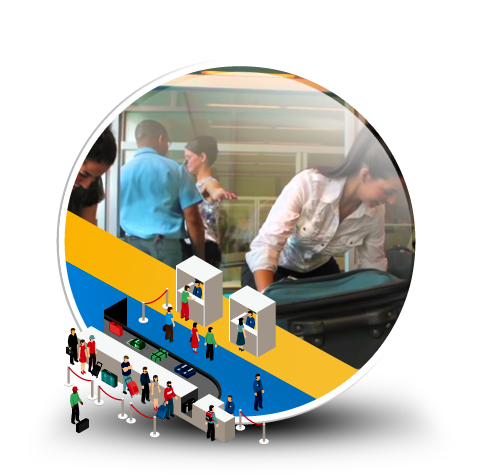It can be argued that airports and seaports are the most dynamic environments in the transportation market. From facing evolving terrorism threats and crime to complying with rules and regulations and addressing the needs of a wide variety of passengers, these complex environments operate at breakneck speeds and leave little room for error. An airport, in fact, operates like its own metropolitan area. Multiple ingress and egress points, perimeters and facilities need to be monitored and thousands of travelers and employees need to be protected on a daily basis.
Video surveillance technology is part of any multi-disciplined security strategy. It augments security personnel and enables operators to effectively engage in real-time monitoring and situation management while supporting investigative and forensic needs. In particular, an open-platform approach, combined with the ability to integrate with other third-party systems, allows organizations to benefit from other best-in-class technologies to promote a stronger security posture and permit a coordinated emergency response when necessary.
But it is important to keep in mind that video surveillance is only one part of a comprehensive security strategy. Strategic security policies and processes, effective security personnel training and staffing are key segments that must be developed first, and then combined with video surveillance and security management technologies.
The combination of valuable tools to enhance airport and seaport security efforts, such as IP video surveillance, advanced video analytics, 360-degree panoramic video technology and advanced video recording and monitoring systems, enables users to build stronger security programs through intelligent data collection. Video viewing and policy-based distribution improves emergency management, while open video management platforms unify security solutions and procedures into an intuitive platform that drives new levels of situation awareness and enables rapid response.
Today’s solutions must also drive collaboration between multiple stakeholders and responding agencies. Video data must be easily shared with other airport departments and local agencies such as police, customs, fire and medical response and even airport operations. The process of sharing critical security data with these parties enables more informed response, rapid investigation processes and greater awareness across the organization.
One of the most difficult challenges faced by airports and seaports today revolve around increasing operational efficiencies while ensuring a high level of safety. Security leaders often look to leverage existing technologies, such as surveillance cameras, to help streamline operations through the optimization of staff and technology resources. This approach delivers greater security capability through early detection of threats, allowing for compliance with security regulations and procedures.
Overall, these mission-critical facilities must embrace a proactive approach to security and emergency response to best address specific security concerns. Innovative surveillance and security management technologies provide a high level of safety, security and disaster preparedness for the vast and diverse environments typical of today’s commercial airports and seaports. By combining video surveillance with intelligent tools such as video analytics and other third-party tools, security officials can easily identify suspects and potential vulnerabilities, as well as ensure compliance with government regulations.


